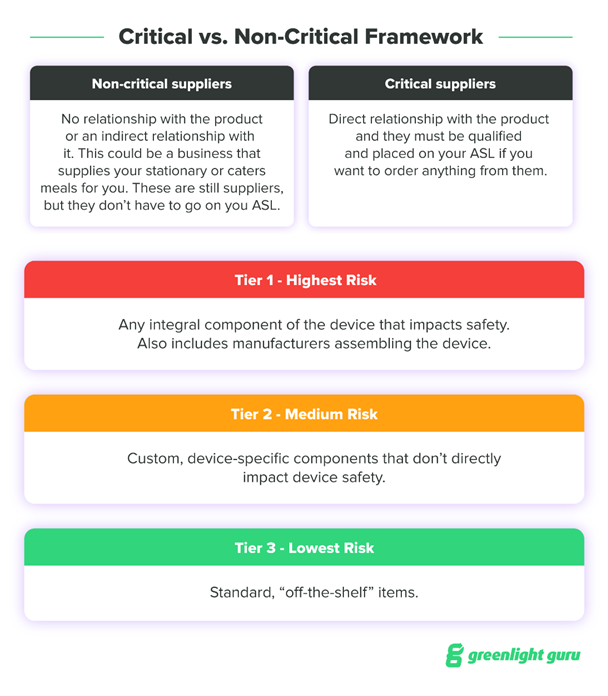|
Would you willingly spend $3,000.00 for a 10% chance your ‘investment’ would produce a good return? While many of you reading this instinctively thought “absolutely not”, there inevitably was a select few who thought to themselves, “depends on what the return is”. A 10% chance your initial investment produces a positive upside is not a favorable proposition to say the least yet businesses do this all the time, in fact multiple times, if not dozens of times, a year. I welcome you to the flunky world of ‘corporate training’. Skillademia, an online training and stats organization, indicates US companies spend upwards of $200 billion a year on training and said training carries about a 10% effectiveness outcome. The average company spends $3,000 per employee on annual training with dismal results to show for it. Why is it then companies consistently spend so much money on training for such a poor return. Answer – companies are missing the connection between information retention and positive reinforcement. In today’s fast-paced and ever-evolving business landscape, employee training is vital, yet just as important is the methodology and mindset of those involved (trainers, company management and the participants. This article seeks to shed some light on why training fails more than it helps, and how you can ensure the next time you invest in training you’re getting more of a return on your investment. THE FAILURE OF CORPORATE TRAINING There seems to be a never-ending list which offers insights into the reasons corporate training fails to meet the mark, therefore improving employee performance. The #1 reason corporate training fails is due to a lack of reinforcement: Hermann Ebbinghaus, a 19th Century German Psychologist, was a pioneer in the experimental study of memory and discovered ‘The Forgetting Curve’ which correlates a learners ability to retain information over a given time span. Ebbinghaus suggests people forget a large portion of what they learn if there is no reinforcement, as follows:
Other reasons training programs fail, include:
WHAT HAPPENS IF WE DON’T TRAIN After reading the above it could be easy for someone to say “why even make the investment in the first place” as it relates to corporate and employee training. While on face value that may make sense, the reality of the situation is far worse than most of us may realize. Electing to bypass training for your employees can have disastrous results for the company, its ability to operate successfully and its employees. Below are the common pitfalls, and associated consequences of not training employees:
IMPROVE YOUR CHANCES OF CORPORATE TRAINING SUCCESS So what you’re saying is “I’m damned if I do, and damned if I don’t”. While it may seem that way on first blush, there is a silver lining that is well within our reach. The bottom line is, if you aren’t training your employees you simply aren’t a competitive employer. So rather than avoid training all together, the better approach is to be smart about how you engage in the practice of corporate employee training. Below is a quick rundown of the three most important factors to implement to ensure your training dollars are well spent and well received:
TRAINING DONE WELL HAS A HUGE UPSIDE The verdict is in – most of us know training is a good idea, it’s our delivery that needs help. In fact, about 85% of companies with more than 50 employees provide formal training to their employees, and around 95.8% report offering some form of informal training. (InDemand Designer) If you follow the steps above in IMPROVE YOUR CHANCES OF CORPORATE TRAINING SUCCESS, many companies will find training, when done well, has a big upside, including:
Investing in employee training is not just a strategic move, it is a necessity for any organization which aims to thrive in today’s competitive environment. By enhancing skills, boosting morale, improving productivity, fostering innovation, ensuring compliance, promoting a positive culture, and preparing for the future, training provides a myriad of benefits that contribute to the long-term success and sustainability of the organization. Companies that prioritize and continually invest in training will undoubtedly reap the rewards of a skilled, motivated, and forward-thinking workforce. NEED TRAINING SUPPORT?
Square-1 Engineering’s medical device compliance & business operations training courses primary focus is to support the longevity of your operations through knowledge advancement. Hope, is not a strategy for addressing business challenges like poor team performance and product & system nonconformance. Learn how Square-1’s training courses in Solidworks, Design Controls, Risk Management and Root Cause Analysis can propel your teams performance to the next level. Visit us at https://www.sqr1services.com/training.html.
0 Comments
Special thanks to Medical Design & Outsourcing for covering our press release with our new office in Minneapolis Saint Paul (MSP) Minnesota. Stay tuned for more news and updates as we continue to grow our presence and support in MSP. Square-1 Press release link at MDO: https://lnkd.in/gzeCd-Py #pressrelease #expansion #minneapolissaintpaul #minneapolis #medtech #news #medicaldevice #consulting #growth Press Release: Square-1 Engineering, Inc. Expands Service via New Office in Twin Cities, Minnesota5/15/2024
FOR IMMEDIATE RELEASE Square-1 Engineering, Inc. Expands Service via New Office in Twin Cities, Minnesota Saint Paul, MN – 05.21.2024 – Square-1 Engineering, Inc. (Square-1), a leading medical device consulting firm, is excited to announce the opening of its newest office location in the Saint Paul, Minnesota area. This expansion marks a significant milestone for Square-1 as it continues to grow its presence in key markets across the United States, in particular the Twin Cities comprised of greater Minneapolis and Saint Paul (MSP). The decision to establish a presence in MSP comes as a strategic move to better serve clients in the region and meet the growing demand for medical device engineering and compliance work. With its vibrant economy, thriving business community, and talented pool of professionals, the Minneapolis Saint Paul marketplace presents a wealth of opportunity for Square-1 to connect with new clients and partners. "We are thrilled to be opening our new office in Saint Paul to support the MSP marketplace," said Travis Smith, Founder and Managing Director at Square-1. "This expansion underscores our commitment to providing exceptional engineering and compliance consulting services to medtech clients in this dynamic market. We are eager to collaborate with local companies, leveraging our Class II and III medical device expertise to drive success and growth in the areas of new product development, regulatory and compliance and manufacturing engineering." Square-1’s new office will be located in White Bear Lake, Minnesota, situated east just outside the heart of Saint Paul’s downtown business district. The MSP area, in combination with greater Minnesota, represent a rapidly growing market for medical devices as evidenced in the 2023 designation of the ‘Minnesota MedTech Hub 3.0’ (MMT3.0), one of several dozen tech hubs recognized federally across the country which show potential for significant technology growth. According to Minneapolis Saint Paul Regional Economic Development Partnership, “Minnesota is home to 15,000 healthcare organizations which employ more than 469,740 Minnesotans, including the presence of the top 15 medical device companies in the world.” The largest concentration of MMT3.0 can be found within the Twin Cities or Minneapolis Saint Paul (MSP) area. In addition to enhancing client relationships, the Saint Paul office will serve as a regional hub for the Square-1’s project management office, which helped to build the company’s sterling reputation at its headquarters in Southern California. For more information on Square-1 Engineering, Inc and its medical device consulting services and expertise, visit www.square1engineering.com. About Square-1 Engineering: Square-1 Engineering, Inc. a medical device consulting firm, provides end to end technical project services to medical device OEMs and their supply chain partners. Square-1’s services cover projects of all sizes in Product Engineering, Regulatory and Compliance (RAQA) and Manufacturing Engineering. Contact: Square-1 Engineering – The Medtech Problem Solvers Corporate Headquarters 6 Morgan, suite 125 Irvine, CA 92618 www.square1engineering.com [email protected] 844-300-7771 Establishing A Medical Device Supplier Selection Process for Early and Mid-Stage Companies4/30/2024 When you need help in your device business how do you figure out where to go to find it? Just as important, how do you make sure the partner (supplier) you select is the right one for the job? Establishing a medical device supplier selection process (part of your Supplier Management system) is an important and vital process for any size company. Even though supplier management is mandated by quality management systems globally, its eye opening how many device companies don't have a formal process for identifying and selecting their supply chain partners. Making the wrong decision can lead to countless hours of wasted time and of course money down the drain. If the situation is grave enough, it could also cost someone their job. To find the right supplier, a ‘supplier selection' process is key to develop ahead of time. When considering implementing a formal supplier selection process for a medical device OEM some important steps to consider includes: 1. Consider the Regulations/ Standards: before you begin building out a supplier selection system make sure you get acquainted, or re-acquainted, with the quality requirements for your given global region. (USA & EU - ISO 13485:2016, section 7.4) While perhaps not the leading indicator as of 2024, additional insights can be gained by reviewing CFR 21 Part 820.50, subpart E. (purchasing controls) Chapter 7 of MDSAP can also provide insights in the event your company follows this regulation. 2. Simple Systems: if the idea is to systematize the process of selecting suppliers across a company, regardless of size, it's best to create a simple to follow procedure set as this will encourage adoption. 3. Internal Procedures: start by creating purchasing procedures which align appropriate decisions with justifiable needs. This is especially important if the supplier in question lands on the 'critical supplier' list. Outlining who internally can perform supplier qualifications, as well as who can approve suppliers. 4. Formulate Supplier Criteria: It’s important to know what you want, or most of what you want, before you begin looking for it. Utilizing a pre-established set of standardized criteria will help you ask the right questions, obtain the right information and compare capabilities across a multitude of supplier options. This also helps to remove information bias where we tend to make decisions based on emotional characteristics, rather than on sound science or facts. Depending on the supplier you’re looking for a Supplier Questionnaire can be useful in obtain this information, and or utilizing a Request for Proposal (RFP) process. Typical data you’ll want to obtain may include:
5. Experience and Expertise: Look for a partner(s) with experience in the area you need help with. The last thing you want is a company that will ‘figure it out’ or give it the old ‘college try’ while simultaneously billing you the for experience. Referrals and references are key here, especially if the supplier you’re considering falls in that elusive ‘critical few’ supply chain partner list. The best approach to finding the right supplier is by reaching out to others in your industry, or local industry associations, to learn who they use, and just as important who they don’t use. Take the time to read reviews, gather intel from people you trust before you start calling potential suppliers. While sites like Thomas.net and Google can provide this information it is likely you will quickly find yourself overwhelmed with information. In the end the most useful data is those that are unbiased or comes from experience which is best collected from trusted resources. 6. Proactively Learn About Your Suppliers Behaviors When speaking with a potential new supplier try connecting with the people you will be working with, not just the company’s salesperson. This is important because once the relationship is established most of your time won’t typically be spent with their salespeople rather those delivering the service or product. When courting a supplier pay attention to things like:
If they are a critical supplier it’s vital you learn about their business continuity plan. What if their manufacturing facility caught on fire? Shipping is seriously delayed. Or a key person leaves the company? Do they have plans in place in order to deal with serious situations which could impact their business, and yours? 7. Determine Risk: Every supplier you interact with must have a risk score associated to their involvement with your product and end user. Categorizing risk usually falls into two buckets: non-critical and critical. Greenlight Guru does a wonderful job articulating these categories and risk tiers in its article ‘Ultimate Guide to Supplier Management for Medical Device Companies’, as follows: 8. Perform Audits: while not every supplier needs to be formally audited, especially if you’re looking at a non-critical tier 3 supplier, in particular who is a service provider. That said, it can be a good rule of thumb to audit all suppliers to keep yourself, procedures and systems honest and consistent. It is recommended to audit any supplier which provides components, parts or raw materials, regardless of their risk level to ensure you are in compliance with standards such as ISO 13485. Audits can be done both onsite or offsite; critical suppliers require a much deeper dive into their capabilities and processes to ensure compliance and risk mitigation. Once an audit is performed its vital to finalize the process showing a clear determination of said supplier, including acceptance or rejection and the justification for the decision. 9. Selecting A Supplier: Before you make a final decision which supplier to go with take a step back and think big picture. Is there an opportunity now, or shortly down the road to be looking at economies of scale? Meaning – can one of your suppliers in question do more than just one thing? If so, selecting a supplier who can offer a multitude of capabilities may be the better partner – less points of contacts and companies in your supplier database, opportunity for better pricing if you’re giving them more of your business, increase efficiencies. There is a draw back to this idea which is important to be aware of which is it is wise not to have any one supplier dominating a particular part of your business as this gives them leverage. While single source suppliers aren’t uncommon, it’s advisable to slow the process down and really think through what you need today as well as in the next couple years to determine appropriateness of these kinds of relationships. 10. Agreements and Onboarding: There should never be a time where you go into business with a supplier and not sign a contract. Period. While there are a lot of things which are covered in a contract some of the key considerations may be product or service guarantees, indemnification, no-change clauses, audit openness, pricing and of course intellectual property agreements. Once contracts are signed its important to onboard the new supplier in a methodical and open arms approach. You have decided to go into business with this new supplier, treat them like gold. It may save you down the road. Schedule a formal meeting and invite all key stakeholders from both companies to the meeting. Key discussions for the onboard meeting should cover how the two companies will successfully work together, areas of opportunity in the next 6-12 months, points of contact, expectations on both sides, etc. While this step may seem a bit overkill, it’s important to you look a supplier relationship like they’re now part of the family. The way you treat them and the experience is inevitably what you’ll get as an outcome. 11. Requalifying Suppliers: When creating your supplier selection process it’s considered good measure to include a ‘requalifying process’ to ensure your company is managing its suppliers consistently and diligently. Using a standardized scorecard to capture performance data will make this process easier to manage and act on. A Closing Note on Cost Most supplier selection programs or processes don’t have a specified approach when dealing with the evaluation and costing of products, materials or services. That said, the bigger the company the more robust their approach and or data will be to work with specific to cost. Either way, reality often shows us it doesn’t matter how affordable or cost effective a supplier is, or how nice they are as people. If they can’t perform, and do so consistently, the other two ultimately don’t matter. In many situations I’ve found paying a bit more for the right product/ service and relationship often is worth the investment in the long run despite the extra cost up front. While cost is important, it’s usually not the driving factor when picking suppliers. For most supplier relationships it comes down to:
THE MEDTECH PROBLEM SOLVERS Square-1 Engineering, a medical device consulting firm, provides end to end technical project services to companies which design, develop and or manufacture life science products in Southern California. We utilize a unique approach in helping our customers complete their projects by combining the best of technical consulting services (hands on engineering & RAQA compliance) with technical training programs focused on building powerhouse teams.
Medtech Snapshot presents Rodney Brenneman, medtech start-up exec, who shares his winning strategy on what is needed from a leadership perspective in order to propel a pre-clinical company forward.
Hear how emotional intelligence, adaptability and long-term strategies make the difference! If you're enjoying these Medtech Snapshots, be sure to check out our archives of past episodes HERE. #medtech #snapshot #podcast #medicaldevice #startup #entrepreneur #strategy #commercialization #emotionalintelligence #EQ #leadership We're thrilled to announce Square-1 Engineering has officially expanded into the Twin Cities, Minnesota marketplace. With this expansion our company is better positioned to support our device customers in the midwest while further expanding our service capabilities.
Learn more about Square-1 HERE. Stay tuned for more information on our growth in the Twin Cities area. This 3-part series of Medtech Snapshot features Jeff Gable, medtech embedded software SME. In part-3 Jeff dives further into strategies for developing design requirements and how staying away from 'TBD requirement' data is advisable.
Hear how flushing out requirements to their full level of detail is vital, while establishing appropriate traceability processes in tools like Matrix or Jama will keep you organized and moving your team and project forward. #agile #embeddedsoftware #productdevelopment #medicaldevice #medtech #NPD #FDA #designcontrol #designinput #snapshot #requirements Medtech Snapshot - Agile and NPD episode part-2 of 3 features Jeff Gable, embedded software SME, diving in on Agile and NPD activities.
Jeff walks us through his strategy for Agile development with FDA design controls, specifically within the design input phase. Hear the first two steps of his four step approach. #agile #embeddedsoftware #productdevelopment #medicaldevice #medtech #NPD #FDA #designcontrol #designinput #snapshot Ep 31 of Medtech Snapshot features Krystal Santiago sharing with us strategies for working with regulatory agencies during a submission and how utilizing an intermediary can be beneficial. This impacts decision making with clinical studies, product codes and requirements, pre-submission planning, etc.
Did you miss the last 30 episodes of Medtech Snapshot? If so, check out our archives at https://www.sqr1services.com/white-papers/category/snapshot #medtechsnapshot #snapshot #medtech #medicaldevice #FDA #regulatory #productsubmission #compliance #510k #PMA In this episode of Medtech Snapshot we're joined by Philippe JEAN who walks us through strategies for medical device supply chain management, in particular dual sourcing for critical components. Want more Medtech Snapshot? Check out our archives featuring dozens of episodes covering medtech content from NPD, Quality, Clinical, Ops and Manuf Engineering HERE #supplychain #sourcing #logistics #supplychainmanagement #strategy #medtech #medicaldevice #snapshot About the AuthorTravis Smith is the founder and managing director of Square-1 Engineering, a medical device consulting firm, providing end to end engineering and compliance services. He successfully served the life sciences marketplace in SoCal for over 15 years and has been recognized as a ‘40 Under 40’ honoree by the Greater Irvine Chamber of Commerce as a top leader in Orange County, CA. Categories
All
Archives
July 2024
|
||||||
Visit Square-1's
|
|










 RSS Feed
RSS Feed


